Pronunciation problems
To choose the right teaching tactics and understand how to make the sound “Ch,” you need to know what types of disorders exist in children. The phoneme “Ch” is made up of 2 letters “T” and “Sh”. The pronunciation of “Ch” depends on the child’s mastery of these sounds.
Classification
defects:
- Interdental.
The tongue is between the teeth when the baby tries to pronounce the phoneme. The sound becomes lisping and unclear. - Prizubny. The tongue is tense and is located behind the upper incisors. The tip of the organ touches the alveoli. The sides rest against the molars. This position of the tongue can cause the “Ch” to be replaced with a hard or soft “T”. The air stream is jerky.
- Labial- dental. The tongue is lowered to the bottom. The sides touch the molars located in the upper jaw. The lower lip rises, coming into contact with the upper incisors, located in the center. “Ch” is replaced by “F” (teapot – Faynik).
- Side.
When exhaling, the air stream passes along one side of the tongue. The organ can be located at the upper or lower incisors. At the same time, having an inclination to one side. The sound is unclear. - Hissing. The tongue tenses and arches. The tip of the organ is at the bottom. He focuses downwards in the oral cavity. The air stream passes over the entire tongue area. The “Ch” is replaced with a soft “Sh” (chub - Shyub).
- Whistling.
The speech organ touches the lower central incisors. The middle of the tongue is curved and forms a groove. The sides are adjacent to the back upper teeth. Lips in a smiling position. As you exhale, the air passes through the middle of your tongue. The “Ch” is replaced with a hard or soft “S” (miracle - Syudo, cup - Sashka). - Nasal.
The tongue moves down and is pulled back slightly. In this case, the back of the organ tenses with the middle touching the palate. The air stream exits through the nose. The sound becomes nasal (miracle - Hnyudo).
Important! If one of the listed defects is detected, it is recommended to consult a specialist.
Each deviation requires an individual approach to solve the problem.
Topic: “Sound [H]. Letter H"
Goals: to consolidate the skills of distinguishing and pronunciation of the sound [H] in syllables, words, phrases; clarify articulation, give characteristics; to train children in the ability to isolate the sound [H] against the background of a word and from a word, select pictures, come up with words with a given sound; consolidate the ability to determine the position of a sound in a word; form sound-syllable analysis and synthesis of words; practice making sentences based on supporting words; introduce children to the graphic image of the letter H. Continue teaching the transformation of words; read words and sentences; consolidate the ability to form nouns with diminutive suffixes; develop phonemic hearing; develop the ability to concentrate; develop the ability to listen to the speech of an adult and each other.
STROKE OD
— Guys, let's hold hands and smile at each other to create a good mood. And to make the mood even more wonderful, we will call a sunny bunny. Gymnastics for the eyes “Sunny Bunny”:
| My sunny little bunny, jump on your palm. My sunny little bunny, small as a baby Jump on the nose, on the shoulder. Oh, how hot it got! Jump on your forehead and start jumping on your shoulder again. We closed our eyes, and the sun was playing. The warm rays gently warm your cheeks! |
Subject message.
— Before starting the lesson, we will check our mailbox (we find a letter from Grandfather Letterer). Read who the letter is from.
Letter from Grandfather Letterer
- Guys, Grandfather Letterer tells us bad news. The stuffed animal stole a new letter that we were supposed to meet today. We need to find her. To do this we must guess what letter it is.
Game “Name it kindly” (with a ball).
Ball-ball, key-key, squirrel-squirrel, cup-cup, dog-dog, spoon-spoon, fork-fork, suitcase-suitcase, watch-watch, etc.
- Have you guessed what the same sound is heard in all these words? That's right, this is the sound [CH], which is denoted in writing by the letter CH. This means that today we must find the letter...CH. And to find this letter, we will first take a closer look at the sound [H].
Articulation of the sound [Ch] (The lips are moved forward and rounded. The tip of the tongue touches the palate. The lateral edges of the tongue are tightly pressed to the upper molars. The back of the tongue is raised. When pronouncing a sound, the tip of the tongue comes off the palate.)
Characteristics of sound [H] (consonant, always soft, dull) .
Differentiation of the sound [Х] from other sounds, in syllables and words.
- I will pronounce sounds and syllables, and if you hear the sound [H], clap your hands.
- And now the speech exercise “Don’t yawn, catch the ball and repeat” (pronouncing syllable rows). Ach-och-uch-ich, cha-cho-chu-chi, acha-ocho-uchu-ichi; chna-chnu-chnu-chni; what-what-honor, etc.
-And I have an answering wand. Whoever gets the stick in their hands will name a word with the sound “H” (children come up with words with this sound).
Determining the place of sound in a word, sound analysis of words.
- Guys, we got so carried away that we forgot that we needed to find the letter C. Grandfather Letter Scientist sent us assistants. And the first mate rushes to our aid, who is it - that’s right, it’s Thumbelina (illustration).
- Thumbelina will tell us the way if we complete her task. There are pictures on the board with the sound [H]. Children choose a picture for themselves and determine the place of the sound “Ch” in the names of the pictures. And Thumbelina sends us to the next hero.
This hero is Cheburashka (illustration).
Dividing words into syllables.
- And Cheburashka prepared a task for us, which is called: “Tap the word” (children divide words into syllables, tapping them with a musical hammer).
- Well done, you coped with this task! Cheburashka says that only one brave fairy-tale hero knows where Chuchelka hid the letter C. And this is Chippolino (illustration).
Drawing up proposals.
- But Cippolino also has his own task, he invites you to come up with funny sentences about our helpers (children come up with sentences based on pictures).
— Cippolino really liked your suggestions, so he gives a hint: “Read the word by the first sounds, and you will guess where Chuchelka hid the letter C.”
(Children guess the word “chest”).
- So, the letter is in the chest and we need to find it. (Children find a chest and a hidden Scarecrow).
Speech therapist: I found a chest and Stuffed Animal is here.
Why did you steal the letter?
Chuchelka: I wanted me to have my own letter H, because there are two of them in my name, and I don’t even know how to write it.
Speech therapist: But the guys also need to know this letter, otherwise they won’t be able to read and write words with the letter Ch. Guys, tell me how you can write the name Chuchelka without the letter Ch (children: “Uelka”).
Stuffed Animal: Oh, how ugly it turned out.
Speech therapist: Don't you like it?! Then ask the guys for forgiveness and return the letter.
Stuffed Animal: Sorry, guys. Now I’ll give you the letter, it’s in my chest (pronounces the words) “Chest, chest, open your barrel” (can’t open it). Guys, help me, let's say these words together, clearly highlighting the sound “Ch” (children pronounce it, the chest opens, Stuffed Animal takes out a letter and gives it to the children)
Speech therapist: Guys, let Chuchelka sit in our class and teach the letter C with us.
Introducing the letter Ch.
— Guys, who can tell Chuchelka how a sound differs from a letter (children’s answers)
- Look, here is the letter C. What does it look like?
H - you decided correctly, they write it the same way as “4”.
We can’t confuse letters only with numbers, friends.
- What elements does it consist of (two vertical sticks and one horizontal). Stand up and write this letter in the air, and now with your right hand on your left palm and vice versa, and also on each other’s backs. Typing letters in a notebook.
Working at the box office, converting words.
- Now let’s open the cash registers and find where the letter H lives (floor, window). Place the word Tea on the top strip, and how to make the word Chaika come out of the word Tea, and the word Chaika into Cup. Well done, we're cleaning up the cash registers.
Reading sentences
— And the last task from Chippolino, Cheburashka and Thumbelina is in envelopes. These envelopes contain words. Your task is to make sentences from these words and read them.
Summary of the lesson.
- So we got acquainted with the sound and the letter H. What can you say about this sound?
Name words with the sound [H].
- Scarecrow, did you like working with us? Then come to us again, and the guys and I want to give you the letter C so that you can have your own letter.
Chuchelka: Thank you, and I also have a sweet surprise for you, its name also has the sound [H], guess what it is? (lollipop) Lollipop is in my chest, help me open it, remember the magic words: “Chest, chest, open your side.”
The stuffed animal treats the children and leaves.
- Guys, you tried your best today, listened carefully, answered well, everyone was great!
Readiness of the child’s speech organs
The appearance of sound culture of speech in a baby occurs almost from birth (norms here). The development of speech abilities is presented in the table.
| Stages | Characteristic |
| Preparation. | It appears in the first year of the baby’s life (babbling, humming). By 6 months, the child begins to imitate adults, copying frequently pronounced sounds. |
| Pre-preschool. | Duration of the period is 1-3 years. The appearance of new words (baba, mom). Making simple sentences. |
| Preschool. | For preschoolers under 4 years old, the sound “Ch” is replaced or softened. By age 5, the defect should disappear. The formation of sizzling ones begins. The preschool period lasts until 6-7 years. The child's vocabulary is more than 2,500 thousand words. |
| School. | Lasts from 7-17 years. In primary school, speech abilities are fully formed. |
Important! By the age of 11, it is necessary to eliminate all the child’s phonetic errors, provided there are no physical abnormalities associated with defects in the organs of the speech apparatus.
The ability to correctly pronounce the sound “Ch” is formed only from the age of 5. The phoneme is difficult for a young child to perceive because it consists of two sounds “T” and “Sh”.
Setting the sound Ch
The sound Ch can be made in several ways:
- Start by pronouncing the soft sound t. Pronounce it quickly. In this case, the tongue should touch the tips of the upper teeth, then the tongue is slightly curled, as if stroking the bases of the upper teeth. At the same time, the corners of the lips are stretched into a smile.
- Alternately name the sounds t and sh. Do it quickly. At the same time, the lips are stretched into a smile again.
- To find the hole between the teeth from the inside, you can use a piece of paper. First, the hole is felt with your hands, and then paper is applied there. To hold it, you need to apply force - this is an excellent warm-up for the tongue.
We teach you to pronounce hissing sounds using the methods of Fomicheva and Bogomolova
Articulation of the phoneme Ch
To produce sound quickly and without problems, it is necessary to convey to the child in what position and how the speech organs should move. Correct articulation
clearly presented in pictures:
Correct articulation of the “ch” sound
- The lips are slightly pushed forward. Take a rounded shape.
- The teeth are separated.
- The tongue is relaxed. The tip of the organ touches the lower teeth. The back is pressed against the alveoli. Its middle part touches the hard palate.
- The air stream passes through the middle of the tongue.
Exercises
Before starting classes, a specialist may refer the child for examinations:
- mental abilities;
- hearing;
- correct structure and development of the articulatory apparatus.
The speech therapist also collects anamnesis (information). Information is needed to determine the child’s living environment. Often the cause of incorrect pronunciation is the environment. For example, bilingualism in the family. Then there is a need to differentiate the phoneme.
Speech therapy classes consist of a gradual transition of stages in mastering the sound “Ch”. In the preparatory group, articulatory gymnastics are performed to develop organ mobility.
Tasks can be completed at home, for example:
- “Pie” (strengthening the muscles of the tongue). We open the oral cavity. We protrude the speech organ so that it takes a spade shape. Raise the sides until a groove is formed. The lips are smiling. We perform the exercise for 10 seconds 2-3 times.
(working on the ability to keep your tongue raised and control the air flow). Keep the oral cavity open. The lips are smiling. We stick out our tongue. We lift its sides and tip. Lower the middle down. While holding the organs in this position, we try to blow out a stream of air. It should be felt at the tip of the nose.
"Focus"- “Mouthpiece” (strengthening and developing mobility of the labial muscles). We close our teeth. We perform movements only with our lips. They imitate the production of vowels.
- “Jam” (practicing tongue movements). Open your mouth slightly. Smile with your lips. Run your tongue first along the upper and then along the lower lip. In this case, the organ takes on a spatulate shape. After circular movements, pull the tongue into the oral cavity. Its sides should touch the upper molars. Perform the exercise 3-4 times.
- “Horse” (stretching the bridle). Use your tongue to imitate the sound of a horse's hooves. At the same time, open your mouth wide and stretch your lips into a smile. The duration of the lesson is 15 seconds.
Important! Adults perform tasks with a child in front of a mirror. Then it’s easier for the baby to understand how to do them correctly.
After successful completion of the preparatory stage, the production of the sound “Ch” follows.
Methods
- Played from a soft "T". The child is asked to quickly pronounce the sound. The tongue should touch the tips of the front incisors. During pronunciation, the tip of the tongue is slightly bent upward with a special spatula or spatula. The sound “CH” is formed.
- Pronunciation from "T" and "Sh". It is necessary to pronounce phonemes one by one at a fast pace. Lips should smile.
- The appearance of the sound “Ch” with the help of syllables (at, ot, it). The child is asked to repeat one of the presented syllables many times. In this case, use a spoon or spatula to push the tip of the tongue towards the alveoli. Then it turns out “ach, och or ich”.
- Way of imitation. The adult pronounces the phoneme in front of the mirror, showing articulation, and the child tries to repeat it. This exercise requires perseverance in the baby and patience in the parent.
Important!
In case of nasal pronunciation defect, speech therapy exercises are used to practice correct breathing.
The speech therapy database contains a whole file of various tasks. Therefore, parents should not neglect visiting a specialist.
Tongue exercises
Language exercises are divided into static and dynamic.
Static complex:
- "Spatula". Relax your tongue and place it on your lower lip. Stay in this position for 10 seconds (the edge of the tongue should touch the corners of the lips).
- “The point of a needle.” Remove the tongue from the mouth, straighten and tense - the tongue at this time should be even and narrow.
- “Angry cat.” Place the tip of your tongue against your lower teeth and touch the middle of your tongue to your upper palate. Stay in the position for half a minute.
Speech therapy exercises for speech development in children from 3 to 4 years old
Dynamic complex:
- “Punishment for the tongue.” Stick out your tongue and place it on your lower lip. Press your tongue with your lips and say five-five-five.
- “Watch.” Stick out your tongue and stretch it to one ear, then to the other. Keep the entire speech apparatus in tension.
- “Swing”. Stick out your tongue and pull it alternately towards your nose and chin.
- "Horse". Click your tongue, imitating the blows of a horseshoe. The middle of the tongue is always pressed to the palate.
- "Little Turkeys" Run your tongue back and forth across your upper lip so that you make the sound bl-bl. The speed of movement gradually increases.
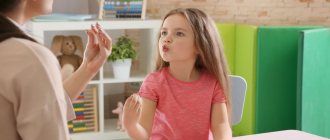

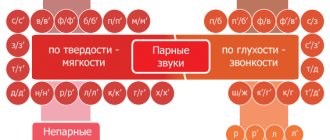
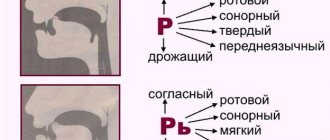

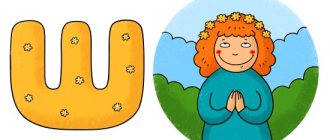

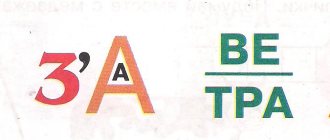


![Producing the sound [L] to a child in stages. Articulation gymnastics, speech therapy exercises, pronunciation lessons with pictures](https://doktorobrubov.ru/wp-content/uploads/postanovka-zvuka-l-rebenku-poetapno-artikulyacionnaya-gimnastika-logopedicheskie-uprazhneniya-uroki-330x140.jpg)